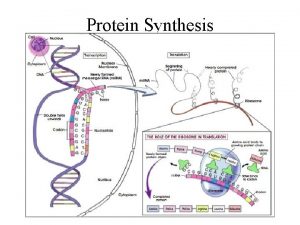DNA vs RNA Provides instructions for protein synthesis



- Slides: 3

DNA vs. RNA • Provides instructions for protein synthesis • 2 stranded, double helix structure • Sequence of three bases calls for particular amino acid • Found in nucleus • Replicates • Eukaryote • Without RNA, DNA cannot be decoded, transported, or synthesized • Nucleic acid • Both essential for protein synthesis • Have 4 nitrogen bases • Monomer nucleotide • Phosphate sugar backbone • m. RNA retrieves DNA from nucleus • t. RNA translates these instructions • r. RNA synthesizes protein • 1 strand molecule • Contains ribose sugar • Found in cytoplasm

Mitosis vs. Meiosis • Division and reproduction of most body cells • Starts with one diploid cell and result in two daughter cells • Tetrads cross over in prophase 1 • Results with same number of chromosomes as parent cell • Cell division and reproduction • Asexual • Start with one parent cell • DNA replication • Division and reproduction of sex cells • Start with one diploid cell and result in four haploid cells • Produces gametes • Cells produced are not identical • Two rounds to produce daughter cells • Homologs pair in prophase 1

Transcription vs. Translation • • Step 1 DNA unzips m. RNA nucleotides bond to complementary DNA bases Message or code obtained by m. RNA from DNA can’t leave nucleus • Depend on each other to make protein • • • Step 2 m. RNA carries message to ribosomes Ribosomes can’t read code until t. RNA brings amino acids and bonds with codon Takes place in cytoplasm m. RNA scanned by r. RNA Protein synthesized





